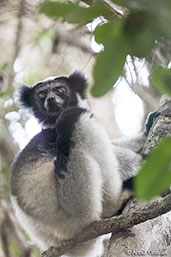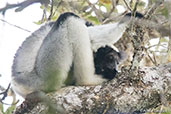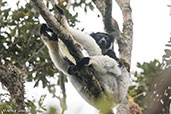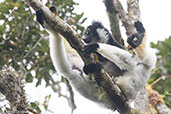
November 2016
The Indri is, like all lemurs, endemic to Madagascar where it is distributed in the north-east and central-east forests up to about 1,800 metres.
It is the largest lemur and is the most diurnal of the lemurs moving at night only in rare circumstances.
Most photos show the typical "panda" colouring shown here but there are variations up to almost completely black Indris. It has very long arms but a very short tail. They live in small family groups with a dominant pair plus their maturing offspring.



| Previous Page | Back to Index | Next Page |